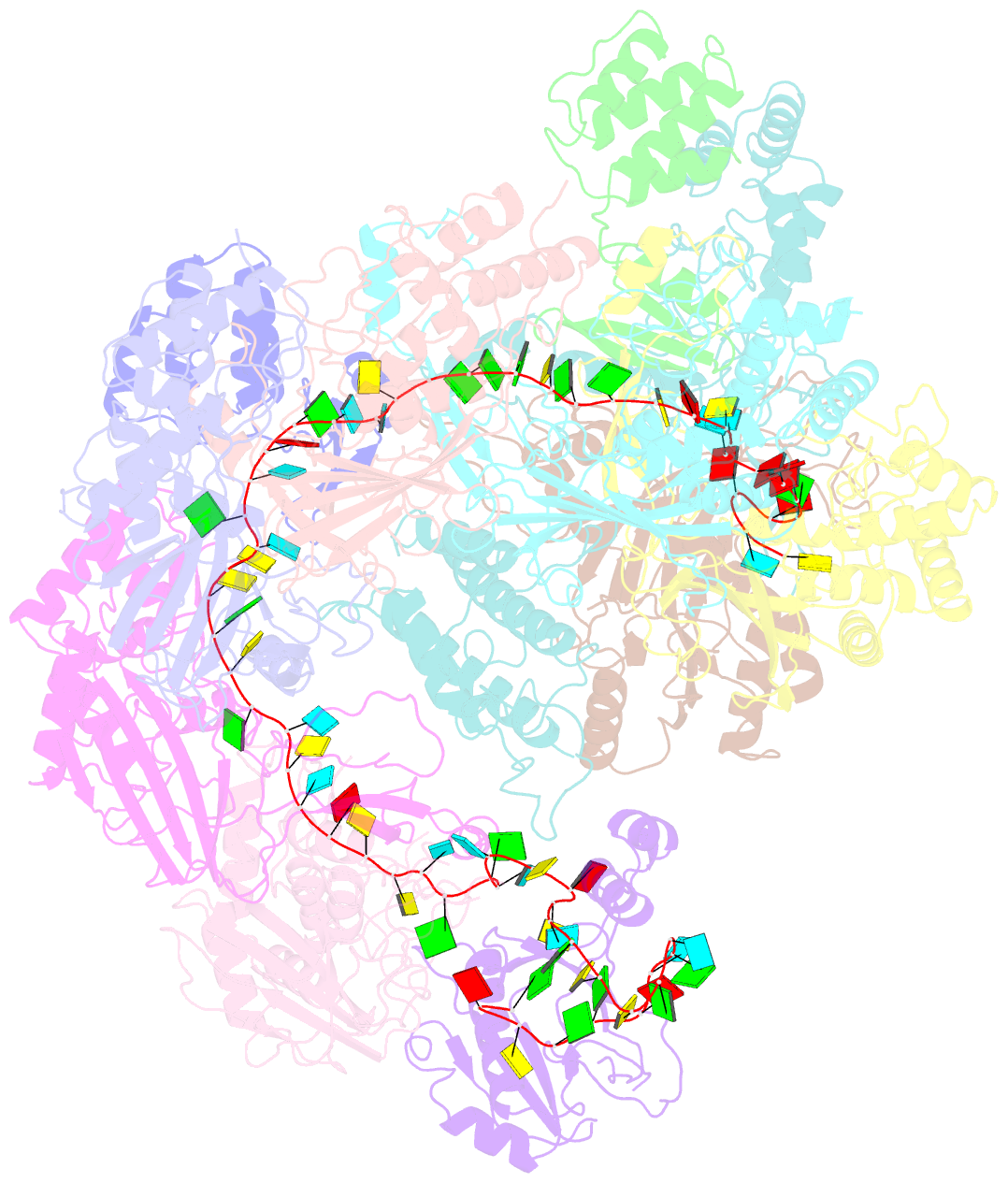Summary information and primary citation
- PDB-id
- 7ecv; SNAP-derived features in text and JSON formats;
DNAproDB
- Class
- immune system-RNA
- Method
- cryo-EM (3.43 Å)
- Summary
- The csy-acrif14 complex
- Reference
- Liu X, Zhang L, Xiu Y, Gao T, Huang L, Xie Y, Yang L, Wang W, Wang P, Zhang Y, Yang M, Feng Y (2021): "Insights into the dual functions of AcrIF14 during the inhibition of type I-F CRISPR-Cas surveillance complex." Nucleic Acids Res., 49, 10178-10191. doi: 10.1093/nar/gkab738.
- Abstract
- CRISPR-Cas systems are bacterial adaptive immune systems, and phages counteract these systems using many approaches such as producing anti-CRISPR (Acr) proteins. Here, we report the structures of both AcrIF14 and its complex with the crRNA-guided surveillance (Csy) complex. Our study demonstrates that apart from interacting with the Csy complex to block the hybridization of target DNA to the crRNA, AcrIF14 also endows the Csy complex with the ability to interact with non-sequence-specific dsDNA as AcrIF9 does. Further structural studies of the Csy-AcrIF14-dsDNA complex and biochemical studies uncover that the PAM recognition loop of the Cas8f subunit of the Csy complex and electropositive patches within the N-terminal domain of AcrIF14 are essential for the non-sequence-specific dsDNA binding to the Csy-AcrIF14 complex, which is different from the mechanism of AcrIF9. Our findings highlight the prevalence of Acr-induced non-specific DNA binding and shed light on future studies into the mechanisms of such Acr proteins.





